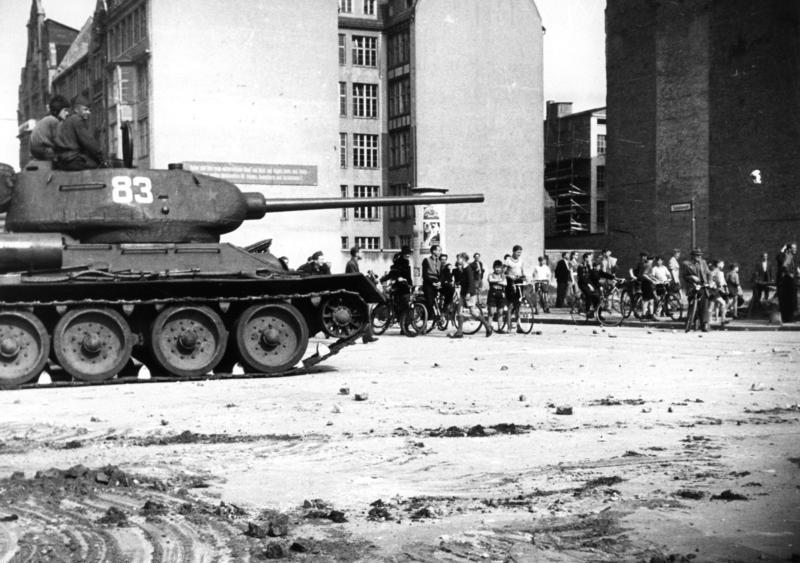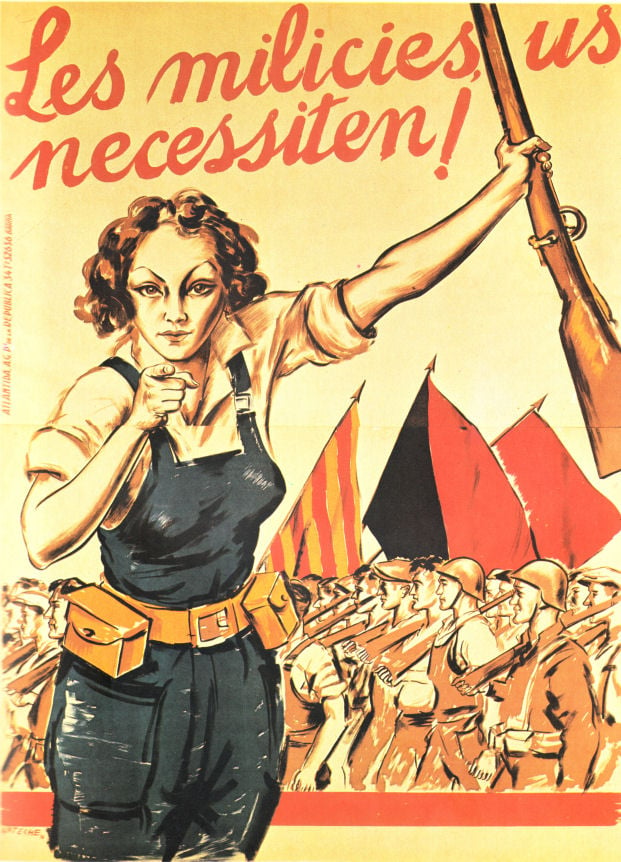East German Uprising (1953)
Tue Jun 16, 1953

Image: Soviet T-34-85 in East Berlin on June 17th, 1953 [Wikipedia]
On this day in 1953, in what became an uprising of more than one million people, 300 East German construction workers protested at government buildings, demanding the reversal of a 10% increase in work quotas.
Due to an economic slump, the East German government had increased worker quotas (called “norms”) by 10% across all state-owned factories. At the same time, the prices of food, health care, and public transportation had all significantly increased, leading to an effective monthly wage cut of 33%, according to historian Corey Ross.
Although the government quickly conceded on the matter of work quotas, the protests took on an anti-government character and spread quickly throughout all of East Germany. News of the initial strike had spread both through word of mouth and the Western “Radio in the American Sector” (RIAS), which provided sympathetic coverage of the protests.
Soviet troops and tanks entered East Berlin on the morning of June 17th and violently clashed with the protesters, who had stormed government headquarters. The East German Stasi engaged in mass arrests of thousands of people.
According to historian Richard Millington, around 39 people were killed during the uprising, the vast majority of them demonstrators. Seven Berlin victims were given an official state funeral in West Berlin on June 23rd, 1953.
Following the uprising’s successful repression, many workers lost faith in East Germany’s socialist state. According to historian Gareth Pritchard, there was a widespread refusal by workers to pay their trade union dues and support the ruling party.
In response to the incident, the East German state expanded its surveillance of workers to more closely monitor discontent, creating what journalist Chris Hedges called “the most efficient security and surveillance state” of its time.
- Date: 1953-06-16
- Learn More: en.wikipedia.org, libcom.org.
- Tags: #Protests, #Labor.
- Source: www.apeoplescalendar.org


“demanding the reversal of a 10% increase in work quotas.” It’s there with some more context but it got cut off for the title. :)